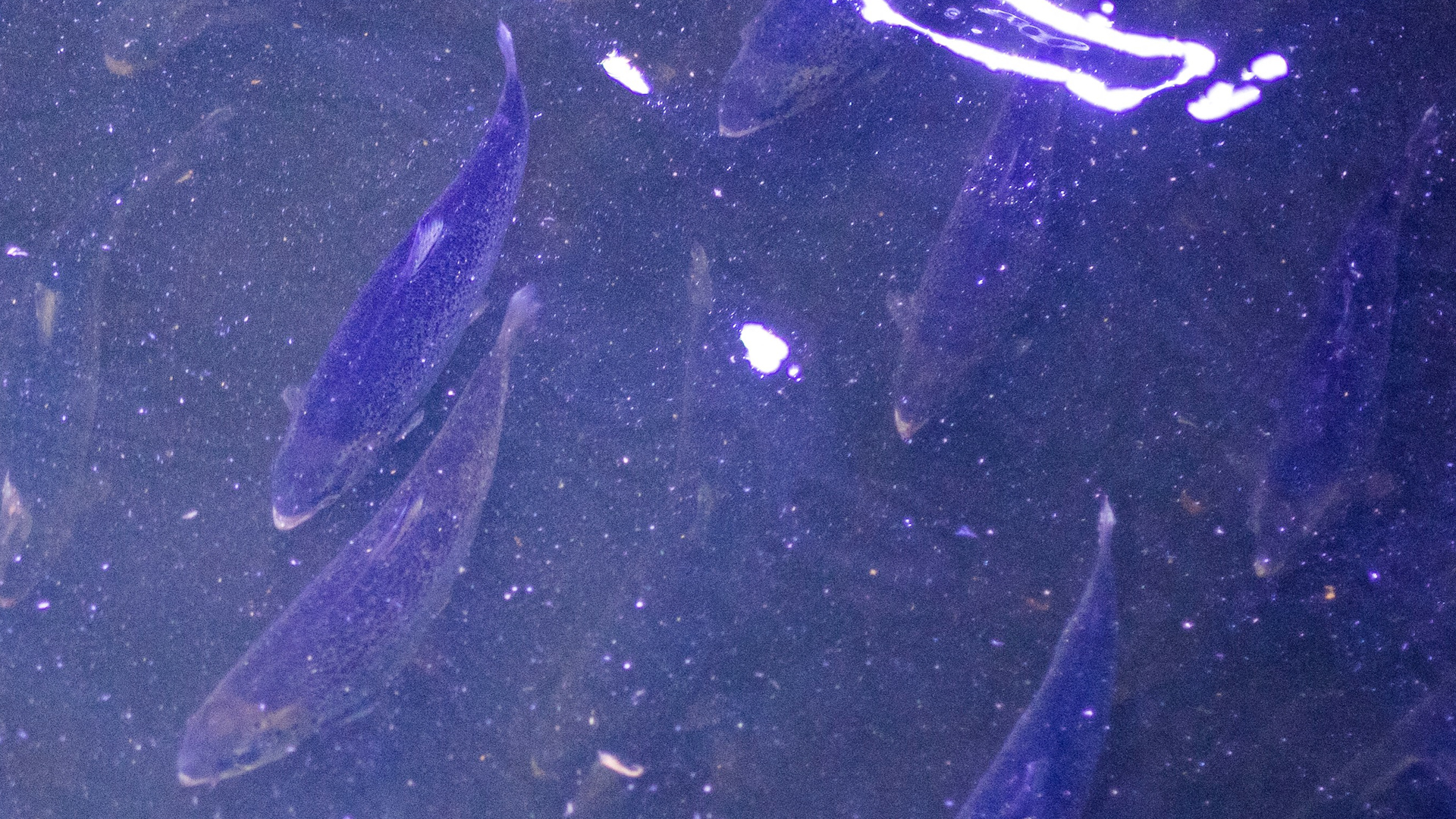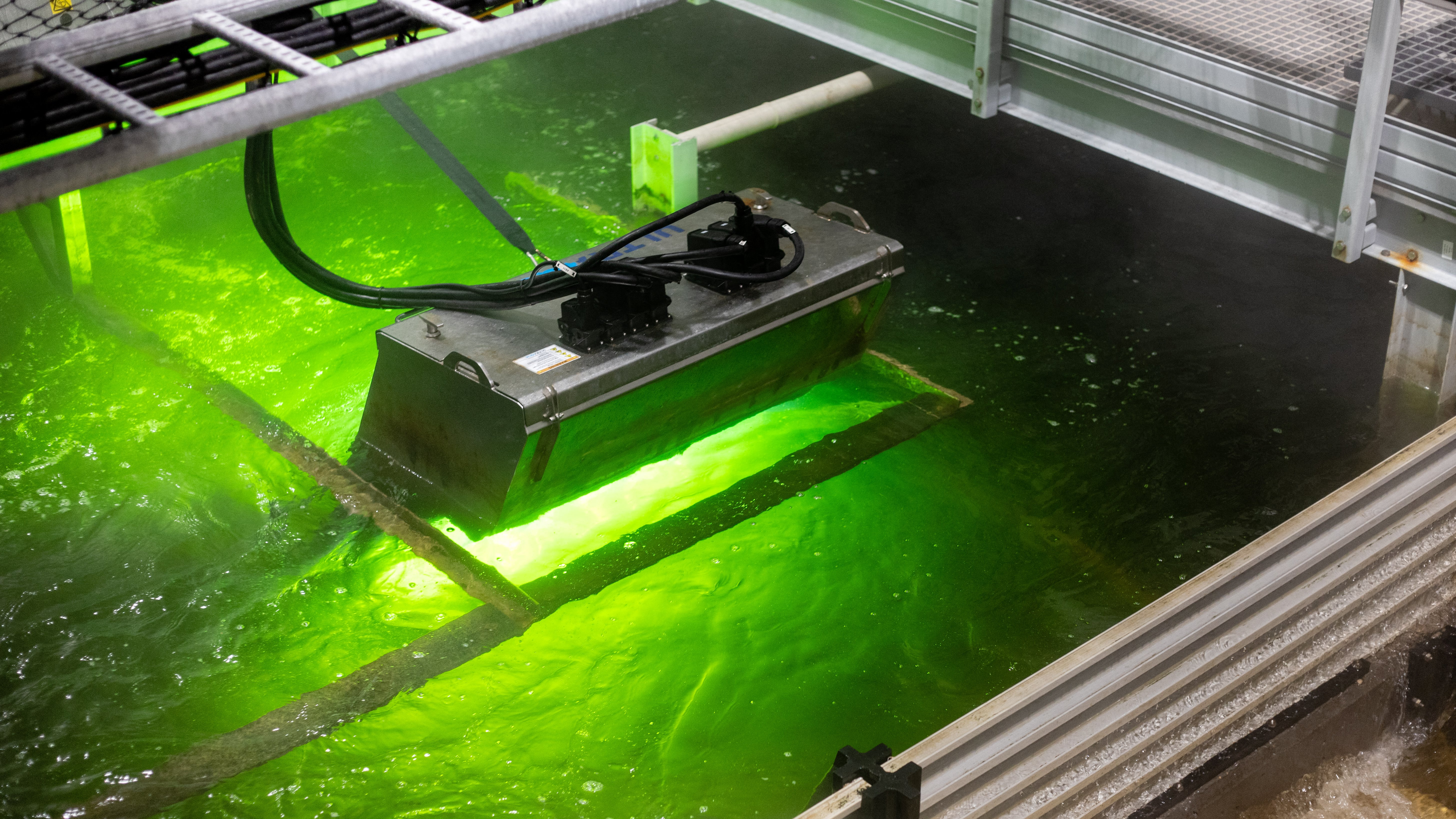00:59

Salmon farming in Norway is swimming against the tide, as hundreds of thousands of fish now inhabit massive indoor tanks away from the nearest river as the controversial industry shifts towards greener land-based facilities.
Fredrikstad Seafoods now farms the fish in two gigantic pools and this is just the beginning of salmon farming adapting to this model further afield, including in China, Japan, Chile, Scotland, Canada and the U.S.. Salmon, which is rich in protein is still considered a luxury in many parts of the world but there is a burgeoning demand for the fish among new customers, especially in the growing global middle classes.
Raising the salmon on land this way is an effort to move the intensive farming method and the sea cages the industry relies on in rivers and oceans, where a slew of problems normally result. These range from costly mass escapes, to fish infected with sea lice then being treated with chemicals, to mounds of faeces and feed piling up on the seabed below the farms.
In a land-based farm everything can be controlled.
"At sea, you depend on the almighty for many things. In a land-based farm, we are suddenly the all-powerful one," says Roger Fredriksen from Fredrikstad Seafoods.
"Here we control everything: temperature, oxygen, pH, CO2," he continued.

Salmon swim against an artificial current in a basin at the Fredrikstad Seafoods land-based salmon farm in Fredrikstad, Norway. /Petter Berntsen/AFP
Salmon swim against an artificial current in a basin at the Fredrikstad Seafoods land-based salmon farm in Fredrikstad, Norway. /Petter Berntsen/AFP
With water pumped from the nearby mouth of Norway's largest river, the saltwater that feeds the facility is treated with UV light to eliminate viruses and bacteria and afterwards it is cycled and filtered through a loop for repeated use. The faint blue light over the pools is designed to trigger the appetite of the fish, which swim day and night as they are fed food pellets from an overhead dispenser.
"The fish have a very firm consistency," said veterinarian Sandra Ledang, head of production at the adjacent abattoir.
"That's because it swims against the current all its life, from the moment it arrives in our facilities until it is slaughtered. It exercises absolutely every day," she added.
This novel fishing method divides opinion. Proponents say that even though land farms require a lot of energy, their proximity to consumers reduces the use of transportation, making them more environmentally friendly.
Two farms are being worked on in the U.S. and the plan to use Icelandic salmon roe to raise the fish there means fewer air miles.
"The idea is to produce locally. No need to fly salmon over the ocean from one continent to another," says Fredriksen.

Water is filtered at the Fredrikstad Seafoods land-based salmon farm in Norway. /Petter Berntsen/AFP
Water is filtered at the Fredrikstad Seafoods land-based salmon farm in Norway. /Petter Berntsen/AFP
Despite the positives, the drawbacks are that production costs are still higher than traditional methods and land-based salmon farming is currently considered more as a complement rather than a substitute for sea or river-based farming.
There is also concern among animal-rights groups.
Compassion in World Farming, which campaigns against intensive factory farming, fears the quest for profits will come at the expense of animal welfare.
"We estimate that the minimum density necessary for profitability is 50 kilograms per cubic meter of water," said Lucille Bellegarde, from the French branch of the organization.
"The average density found in existing systems is more like 80 kilograms per cubic meter," which is eight times denser than what the non-governmental organization recommends.
However, Fredriksen says these fears are misguided as his farm cares about the welfare of the salmon, saying: "If the fish are not happy, they don't grow."
Video editor: Pedro Duarte
Cover image: Peter Berntsen/AFP

